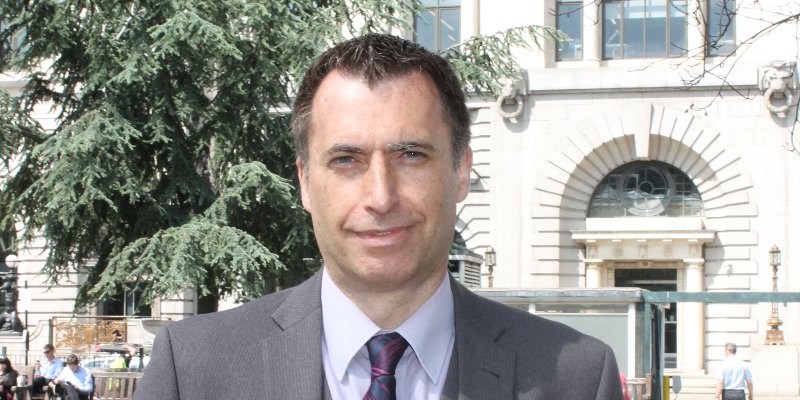It is no longer enough to simply state that you use a ‘single provider’, ‘a limited range’, or ‘whole of market’

Geoff Hall (pictured) is chairman of Berkeley Alexander
The Insurance Distribution Directive (IDD), which regulates how insurance products are sold, came into force in October.
Some key elements continue from the existing regime, such as ensuring client communications are clear, fair and not misleading; and that your remuneration structures don’t create conflicts of interest, ensuring you put your customer at the heart of what you do. However, some key changes include:
- It is no longer enough to simply state that you use a ‘single provider’, ‘a limited range’, or ‘whole of market’. You now need to explain to the client whether you have offered a product from a single provider, from a limited number of insurance providers, or from a wide panel following ‘a fair and personal analysis of the market’. If you have used a limited panel, you also need to specify the names of each of the providers you approached to quote. Talk to your provider or compliance support service to ensure you describe your service appropriately.
- All staff involved in the sale of an insurance policy (including management) must undertake no less than 15 hours of CPD per year (35 hours if you are CII qualified) – if you don’t already have something in place, check out the CII’s excellent online training tool.
- There is now a requirement to provide consumers with a new Insurance Product Information Document (IPID) and for commercial clients, a Business Policy Summary (including professional buy-to-let clients). It’s an insurance version of the mortgage key facts document and is designed to give clients basic information on the product cover in a consistent format to allow them to compare products.
Who is Henry?
It’s generally accepted that within the next 10 years, generation HENRY – High Earners, Not Rich Yet - will be one of the wealthiest economic sectors within the UK and this is why any future marketing strategy by brokers within the wealth sector must take this group into consideration.
Equipping yourself with a detailed understanding of the profile of this sector is central to successfully targeting them. Provide tailored products and services that are suited to that customer demographic and communicate and market to them in ways that resonate, then you have a recipe for success in this important HNW growth sector.
Generally referred to as aspiring wealth, HENRYs are the young, well educated professionals, with above average incomes, and clearly defined career paths. At present they are likely to be city dwellers incurring the high costs of renting, whilst paying off university dept.
But make no mistake, they already enjoy a healthy level of disposable income that supports a busy social life, generally attending HNW events like Ascot, Cheltenham, Cowes Week etc and they travel frequently (both for work and pleasure).
They are tech savvy millennials and will see technology as the normal means of communication rather than traditional letter or face to face meeting.
HENRYs will do their research. Whilst they will be predisposed to take advice from a professional they will do their own online research to initially corroborate advice until a level of trust has been established. It is the brokers who take the time to invest in building a specialist knowledge of the HNW sector who will reap the rewards.
As intermediaries, make sure you partner with GI providers who can deliver the same bespoke, specialist approach and flexible underwriting needed for these clients.
Lessons from the World Cup
Football aside, the £1.5bn in event cancellation insurance attached to this year’s FIFA World Cup shines a spotlight on cancellation cover. The heady sums involved with the World Cup might represent the ‘glamour’ end of this area of insurance, but it nonetheless serves to highlight a crucial area of concern for organisers of UK events, of whatever size.
As an event organiser, the responsibility and duty of care for the visitors, the staff, the entertainment, the equipment etc. lays firmly in their hands and the possible risks and cover needed are extensive and might include anything from:
- Public Liability
- Event cancellation
- Adverse weather (by far the biggest cause of cancellation or disruption)
- Travel delays
- Police authority intervention / local authority intervention
- Equipment cover (fencing, grottos, toilets, stalls, decorations etc.)
- Third party property damage
Other insurable perils associated with event cancellation insurance can include natural catastrophes, acts of terror, communicable diseases, venue damage, power failure, satellite or transmission failure, riots, strikes, civil commotion, and even national mourning!
From the World Cup to a business conference, exhibition or even the village fete, your customers (particularly your commercial clients) could be hosting or attending events that carry significant liability. Costs associated with most conferences and exhibitions these days often run into tens of thousands and are generally non-refundable.
Granted, not all events will carry such high premium levels as the World Cup, but think outside the box and you’ll maximise the income potential from the relationship you have with your clients and ensure you are their first port of call for all their insurance needs. Providing the GI on clients’ mortgage related risks should be just the beginning of the GI story.



